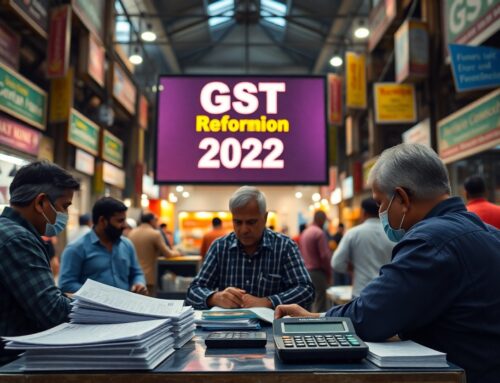– Abul Kalam Azad Sulthan, Advocate, High Court of Judicature at Madras and Madurai Bench of Madras High Court & Partner, Spicy Law Firm.
Introduction
The law can be broadly classified as 1) Substantive Law and 2) Procedural Law. The Substantive Law, whether it is based on statute law or common law, defines what facts are constituting a fact or liability. Till 1859, in India, there was no uniform codified law for the procedures to be followed in Civil Courts. In those olden days, under the British rule, there were Crown Courts in Presidency towns and provincial courts in mofussils. These Courts in Mofussil areas and Presidency towns were governed by different systems of civil procedure through various rules, regulations and special acts and those were changed time to time based on circumstances and needs.[3] For the first time in 1859, a uniform code of civil procedure was introduced by passing the Civil Procedure Code (Act VII of 1859). But this code could not serve the purpose as this code was not made applicable to the Supreme Courts (Crown Courts under the Royal Charter) and the Sadar Diwani Adalats (Principal Courts under the Judicial Plan by the Governor General). In 1861, the Indian High Courts Act was passed and the Supreme Courts and Sadar Diwani Adalats were abolished.[4] Then the High Courts were established by replacing the Supreme Courts at Madras, Bombay and Calcutta. Then the Code of Civil Procedure 1859 made applicable to these newly established High Courts. The Code of 1859 was amended regularly from time to time, and was replaced by passing the Code of Civil Procedure, 1877. This code of 1877 was amended in 1878 and 1879 and the third code of civil procedure was enacted in 1882, which replaced the previous code. The Code of Civil Procedure 1882 was also amended several times and ultimately the present code of Civil Procedure, 1908 was passed overshadowing the defects of the Code of 1882. The Law relating to the practices and procedure to be followed in the Civil Courts is regulated by the Code of Civil Procedure, 1908. The word CODE means, ‘a systematic collection of statutes, body of laws so arranged as to avoid inconsistency and overlapping’. The main object of this code of civil procedure is to consolidate and amend the laws relating to the procedure and practices followed in the Civil Courts in India. As such, it was enshrined in the preamble of the code that it was enacted to consolidate and amend the laws relating to the procedure to be followed in the civil courts having civil jurisdiction in India. The Code of Civil Procedure regulates every action in civil courts and the parties before it till the execution of the degree and order. The aim of the Procedural law is to implement the principles of Substantive law.[5] This Code ensures fair justice by enforcing the rights and liabilities. The Code of Civil Procedure was passed in 1908 and came into force from 1st January 1909. The Code is applicable to the whole country except 1) The State of Jammu and Kashmir; 2) The state of Nagaland and the tribal areas.[6] There is also a provision that the concerned state governments may make the provisions of this code applicable to the whole or part of the State of Nagaland or such tribal areas, by notification in the official gazette. This code is applicable in the scheduled areas of the erstwhile State of Madras (Lakshadweep), the East Godavari, West Godavari and Visakhapatnam agencies (Now in Andhra Pradesh State). The Code is exhaustive on the matters directly dealt by it, but it is comprehensive in other issues. The framers of the code could not foresee the possible circumstances which may arise in the future litigations and could not provide procedure for such situations. Hence the framers of the code (legislature) provided inherent powers to the court to meet such circumstances (where the code could not provide a procedure) according to the principles of natural justice, equity and good conscience. As this Code is a general procedural law, it does not contradict with the local or special law in force. In the event of any conflict between the code of civil procedure and the special law, the special law will prevail over the code of civil procedure. In case the local or general law is silent on any matter, then the provisions of the code of civil procedure will prevail.[7] The Code has two parts and they are 1) The Body of the Code and 2) The Schedule. The Body of the Code has 12 parts containing 158 sections.[8] The Schedule is the second part containing orders and rules. The Body of the Code lays down general principles relating to power of the court, and in the case of the second part, that is, the Schedule provides for the procedures, methods and manners in which the jurisdiction of the court may be exercised. In fact, there were five schedules when this code was enacted. Later the Schedules II, III, IV and V were repealed by the subsequent amendments of the code. The first schedule which is the only schedule to the code now has 51 orders. Each order contains rules which varies in numbers from order to order. There are eight appendices giving model formats (Forms), such as: 1) Pleadings (Plaint and Written Statement formats), 2) Process formats, 3) Discovery, Inspection and Admission, 4) Decrees, 5) Execution, 6) Supplemental Proceedings, 7) Appeal, Reference and Reviews and 8) Miscellaneous. The various High Courts are empowered to alter or add any rules in the schedules under Section 122 to 127, 129, 130 and 131 and such new rules should not be inconsistent with the provisions of the body of the code.[9] The Provisions of the body of the code can be amended only by the legislature and the Courts can not alter or amend the body of the code. When a Court adjudicates a dispute, after the hearing, it has to either pronounce its decision by way of a decree or dismiss the case. Such decision is called Decree. While arriving to such decision, the court will explain the grounds because of which the court came to such conclusion. Such grounds for the decision is called Judgment. Order is also a decision of the court but which will not come under the head ‘Decree’. [12]An order will not determine the rights or liabilities of the parties. Any number of orders can be passed in one suit. Order can be passed on a suit as well as on application. There are 1) appealable orders and 2) Non-appealable orders. There are no second appeal for the appealable orders. To constitute a decree, there should be an adjudication by a court in which the rights or liabilities of the parties have been determined conclusively. It should have been formally expressed by the Court. Jurisdiction means the authority through which a court entertain suits, appeals and applications, and the court administer justice according to the provisions of the law. Jurisdiction of the Civil Court may be categorized as follows: a) Territorial or Local Jurisdiction, b) Pecuniary Jurisdiction, c) Jurisdiction over subject matter and d) Original and Appellate Jurisdiction. Territorial or Local Jurisdiction: Every Court has a territorial limit beyond which it cannot exercise the power vested on it. This limit based on territory is called territorial jurisdiction. Example: The district judge at East Godavari District can exercise his powers only within the district of East Godavari. He cannot exercise his powers in any other district. In the same way, the High Courts will exercise the powers within the state in which it is situated and the neighboring Union Territories attached with the same High Court. Pecuniary Jurisdiction: Pecuniary means “involving money”. Civil Courts, according to their grades, have some limitation to try suits and entertain appeals for the value of money not exceeding some stipulated amount. The High Courts, and the Court of Sessions have unlimited pecuniary jurisdiction. Junior Civil Judges have pecuniary jurisdiction of Rs.3,00,000 and Senior Civil Judges have pecuniary jurisdiction of Rs.10,00,000. Jurisdiction over the subject matter: There are civil courts established to try suits or cases of particular nature. For example, the small causes courts can try only non-contentious cases, like suits relating to promissory notes etc. Similarly there are industrial tribunals and labor courts having jurisdiction to try suits related to industrial and labor disputes only. The administrative tribunals are there to try only service related matters of the Government employees. These tribunals are not courts, but they have been conferred judicial powers to try the matters and enforce the orders. Original and Appellate Jurisdiction: The Court in which the suit is filed initially and if the court has jurisdiction to try the original suits (the initial suit regarding the subject matter), such jurisdiction is called original jurisdiction. Once the case is decided, the aggrieved party may prefer an appeal in appropriate court. Such jurisdiction of the court to hear the appeal is called the appellate jurisdiction. The Supreme Court, High Court and District Courts are having both original and appellate jurisdiction and can hear both appeals and original suits. Important Principles: There are some important principles related to jurisdiction of courts. These principles are there to improve the efficiency of the courts and to avoid any delay. Section 11 of the Civil Procedure Code, 1908 deals with the Res Judicata. According to Section 11, a court shall not try any issue in which the parties and subject matter are same and already been decided by a competent court. This is based on following principles: 1) A person should not be vexed twice for the same cause, 2) There should be an end to a litigation, in the interest of the state, and 3) Every decision of the court must be accepted as correct and conclusive. Sometimes Res Judicata is considered as a kind of Principle of Estoppel. Estoppel is related to evidence, and it stops a person from saying some other thing contrary to what he has said earlier. [14] The Code of Civil Procedure provides for many interlocutory applications under various sections and rules. Interlocutory applications are used in almost every civil proceedings. It is usually considered as integral part of the suit. Usually from the time of institution, till the disposal of suits, any number of interlocutory applications can be filed. These applications are essential to efficient and judicious disposal of suits. Interlocutory application can be filed by any party to the suit and is indicated by abbreviation ‘I.A.’ and consequently numbered. If a party files an interlocutory application, the opposite party will be given an opportunity to file the counter for the same. [15] For Example: ‘X’ is having lawful possession of a Gold Chain, in which he has no interest. ‘Y’ and ‘Z’ are independently claiming the Gold Chain. ‘Y’ is claiming that he is the rightful owner of the Gold Chain and ‘Z’ claims the same. In such circumstances ‘X’ sues ‘Y’ and ‘Z’ to find out the decision of the court as to the ownership of the Gold Chain. In such suits, defendants ‘Y’ and ‘Z’ will adversely claim and litigate. Plaintiff ‘X’ will be silent and be the spectator in such disputes. Hence the real dispute lies between the defendants in Inter-pleader suits. In Inter-pleader suits, the plaintiff must be in lawful possession of a property belonging to some other person. The property may be movable or immovable, and the plaintiff must not have any interest over the property. There shall be two or more claimants for the property and the plaintiff must be ready to handover the property to the right claimant based on the decision of the court. When a suit is heard by the trial court, the trial court enquires the issue, arrives at a conclusion and pronounces a decree either in favor of the plaintiff or the defendant. In such suits, the aggrieved party may prefer to appeal against the decision of the trial court. The term ‘appeal’ is not defined in Civil Procedure Code, 1908. Appeal cannot be claimed as inherent right and can be preferred only where it is expressly provided by the statute. But any person can bring in a suit of civil nature as it is an inherent right. Reference: Section 113 and Order XLVI of the Code of Civil Procedure, 1908 deals with reference. Reference means referring a case to the higher court to seek the opinion of the higher court when there is a doubt in question of law. Review: Section 114 and Order XLVII of the Code of Civil Procedure, 1908 deals with review. According to this a Court may reconsider a decision given by the same court. But a court cannot review its decision suo moto. [17] Revision: Section 115 of the Code of Civil Procedure, 1908 deals about revision. The Higher Courts have revision jurisdiction and can call for record of any case which is already decided. This power is given for the efficient exercise of supervisory jurisdiction of Higher Courts. To enable the courts to deliver impartial and unbiased justice, the Code of Civil Procedure, 1908 provides simple and clear procedures to be followed by the Civil Courts. In case of no provisions relating to some issue or matter, the court will not be able to decide efficiently. Hence the Code of Civil Procedure, 1908 incorporated the provisions for inherent powers. When there is no legislation, the court, in the interest of justice may exercise the discretionary power by acting beyond the powers conferred on them under the Code of Civil Procedure. It is called the Inherent powers of the Court. The Code of Civil Procedure is one of the important branches of procedural laws and it is the one regulating the procedure to be followed by the Civil Courts in India. Although it may have some limitations, but it is still efficient, simple, clear and enables the courts to deliver impartial justice. Sir Dinshaw Fardunji Mulla: The Code Of Civil Procedure (Abridged). Sarkar’s: Civil Court Practice & Procedure Manual. Second edition, 2015. Das J K: Code of Civil Procedure. D.N. Mathur: Code of Civil Procedure. Third Edition, 2015 Y.P.Bhagat: The Code of Civil Procedure with Exhaustive Case Law. 2012 Ministry of Law & Justice: Law Commission of India – 163rd Report on Amendments on The Code of Civil Procedure (Amendment) Bill, 1997 [1] Mulla – The Code Of Civil Procedure [2] Mulla – The Code Of Civil Procedure [3] Herbert Cowell – The History and Constitution of the Courts and Legislative Authorities in India [4] K. Rai – History of Courts, Legislature & Legal Profession of India [5] LexisGreen Civil Procedure: Law Books & Bare Acts on a Pen Drive [6] LexisGreen Civil Procedure: Law Books & Bare Acts on a Pen Drive [7] Sukumar Ray – Textbook On The Code Of Civil Procedure [8] Bare Act – Code of Civil Procedure, 1908 [9] Bare Act – Code of Civil Procedure, 1908 [10] LexisGreen Civil Procedure: Law Books & Bare Acts on a Pen Drive [11] Bare Act – Code of Civil Procedure, 1908 [12] Mulla – Code of Civil Procedure (Abridged) [13] Sarkar’s – Code of Civil Procedure [14] Dr V Nageswara Rao – The Indian Evidence Act [15] V S R Avadhani – A Treatise on Interlocutory Applications [16] The Law Times Reports – Volume 27 – Page 334 [17] M.P. Jain – The Code Of Civil Procedure-Incorporating The Commercial Courts, Commercial Division And Commercial Appellate Division Of High Courts Act, 2015 As Applicable To Commercial Dispute1) Historical Background of the CPC:
a) Meaning and Object of CPC
b) Extent and Application:
2) Scope of the Code of Civil Procedure:
3) Scheme of the Code of Civil Procedure:
4) Salient features of the Code of Civil Procedure:
5) Changes brought by Amendments of 1999 and 2002:
6) Difference between Decree, Judgment and Order:
7) Jurisdiction & Important Doctrines:
8) Interlocutory Applications
9) Special Suits
10) Appeals & Other Important Provisions
Conclusion
Works Cited – Bibliography







Leave A Comment